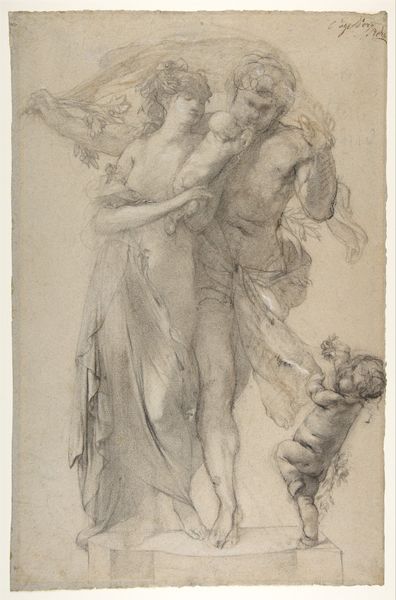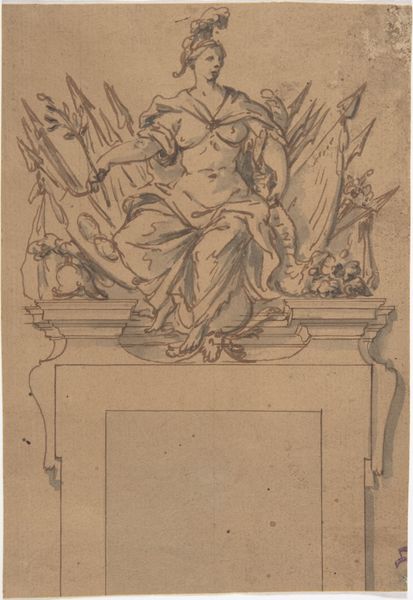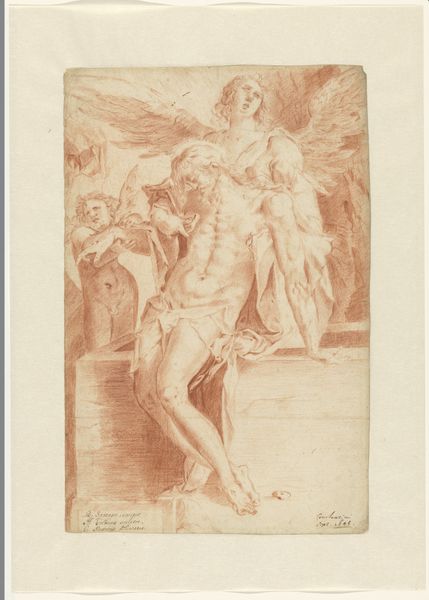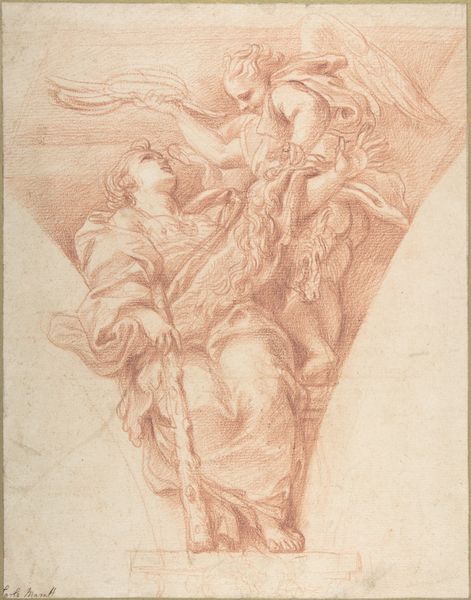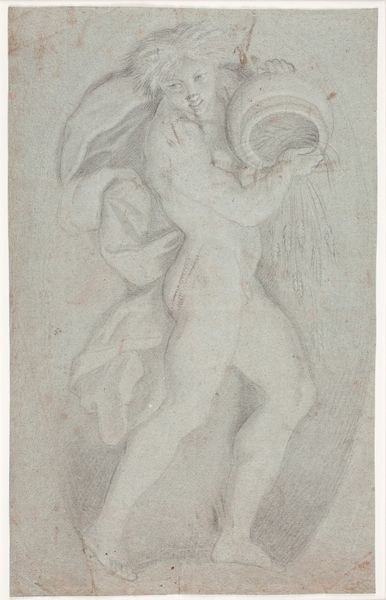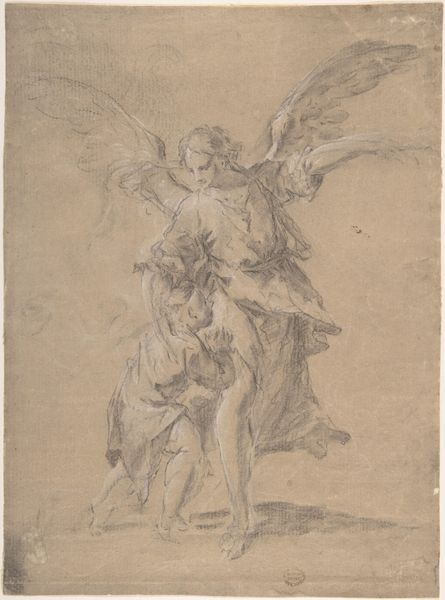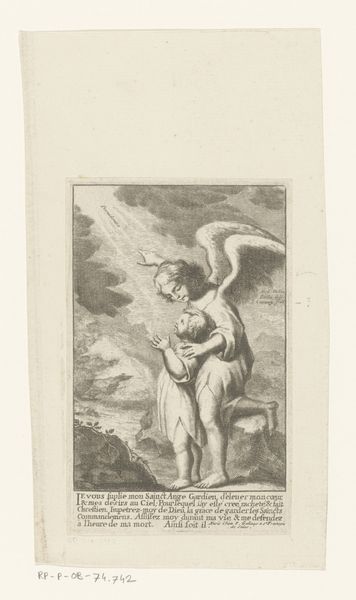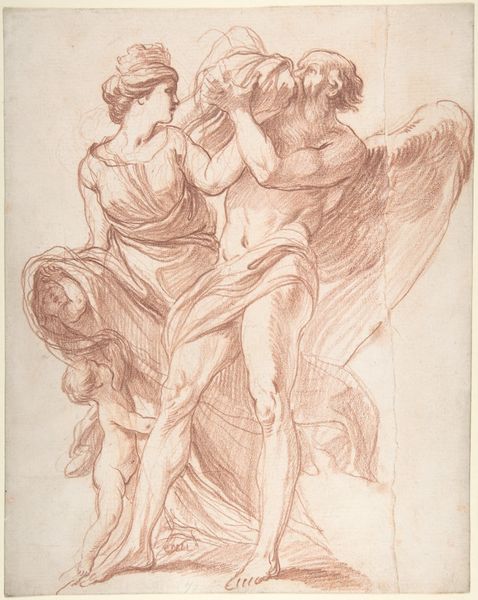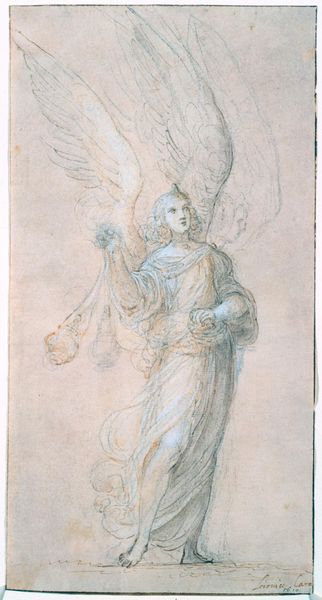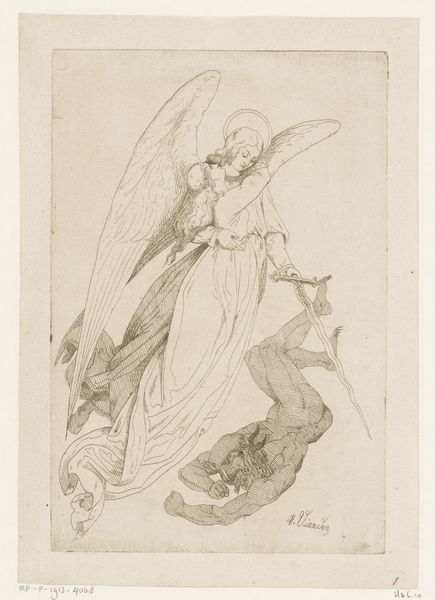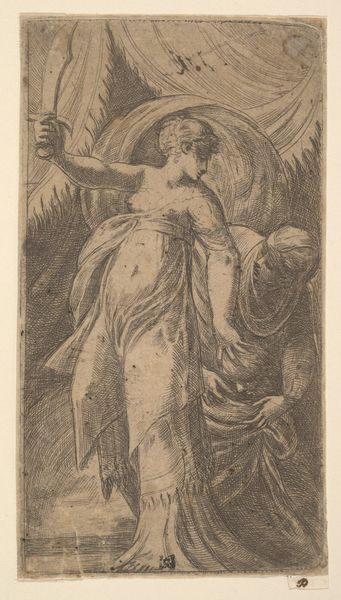
drawing, paper, ink, pencil
#
drawing
#
high-renaissance
#
allegory
#
pencil sketch
#
figuration
#
paper
#
11_renaissance
#
ink
#
pencil drawing
#
pencil
#
portrait drawing
#
watercolour illustration
#
history-painting
#
watercolor
Dimensions: height 260 mm, width 168 mm
Copyright: Rijks Museum: Open Domain
Curator: Welcome. We’re standing before a striking drawing titled "Staande Victoria," or "Standing Victory," by Giulio Romano, dating back to 1525-1535. It's a beautiful example of High Renaissance draftsmanship rendered in pencil and ink on paper. Editor: Wow, she's got attitude. That outstretched arm and pointing finger? It's like she's telling fate exactly where to go. Even in pencil, the intent is fierce. Curator: Exactly! As a leading artist in the circle of Raphael and later court artist to Frederico Gonzaga, Romano often deployed allegory to explore power and status. This figure, most likely intended as a study for a larger work, exemplifies idealized beauty merged with triumphant strength, key to understanding ruling authority. Editor: Idealized beauty... sure, but there’s an urgency here, too. Her drapery swirls like a gathering storm. Is victory always this... turbulent? This pose feels almost defensive. What’s she protecting? Or pointing out with such intensity? It looks less like triumph and more like staking a claim. Curator: A very astute observation! Consider the context. Romano was operating in a world of political instability and competition among city-states. Victoria isn't merely celebrating; she's asserting dominion. Art became a tool for visually communicating those claims and projecting invincibility. The control of imagery really was a sign of controlling perception, if not, very often, reality. Editor: So, almost propaganda? But so elegantly executed. You see the underlying grace in the figure, even amidst the drama. That’s where the High Renaissance aspect speaks. What about that circle next to her, it’s very faint, she seems to lean on it, pointing out something... territory? Maybe even destiny as an earthly extension of power? Curator: The orb, yes, probably a globe or a shield emblemizing claimed land and sphere of influence. Fascinating isn’t it how the medium belies the underlying themes? What appears delicate also manifests forceful power through a well placed motif. It really shows Romano's skills as more than just a technically gifted hand. Editor: Absolutely! You look past the pretty lines and you see it. What I first saw was intent, almost arrogance but seeing it like that really only diminishes her true meaning. Well, this puts "victory" in a whole new light. I wonder, did everyone in the 16th Century catch this nuanced undercurrent, I mean were people this image savvy at that time, or is that a more modern take on his artwork? Curator: Very often art acts on subconscious level and it's not always fully realised during its contemporary time... That's why now, we act as curators, looking into these art works from all angles... This new perspective really puts into perspective what meaning we see in "victory" today. Thank you.
Comments
No comments
Be the first to comment and join the conversation on the ultimate creative platform.
